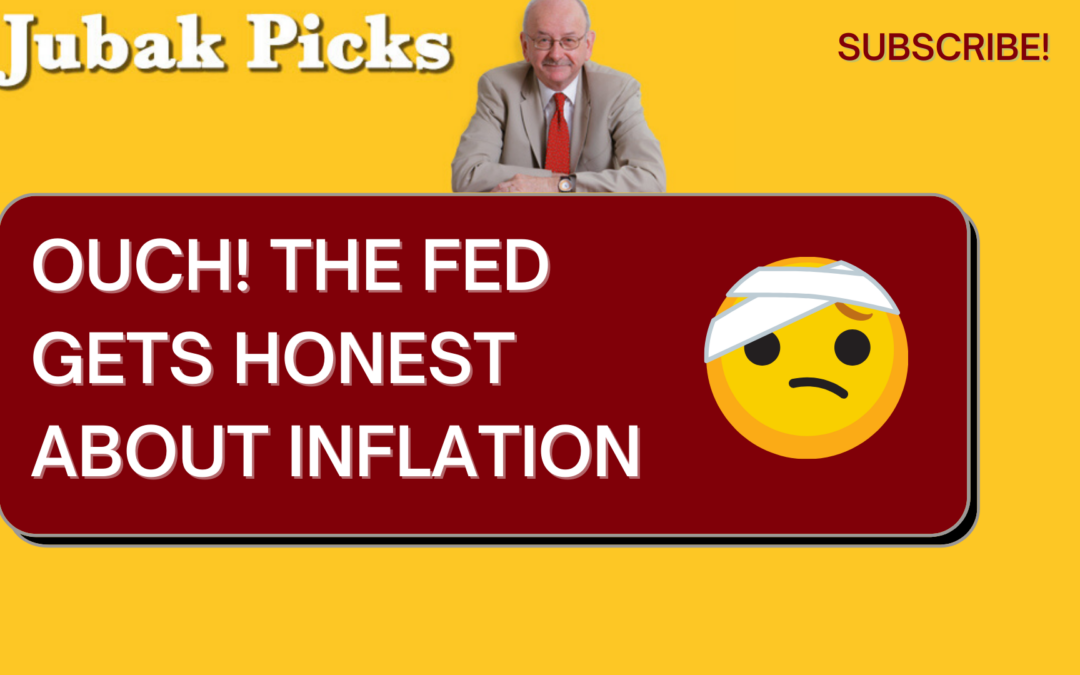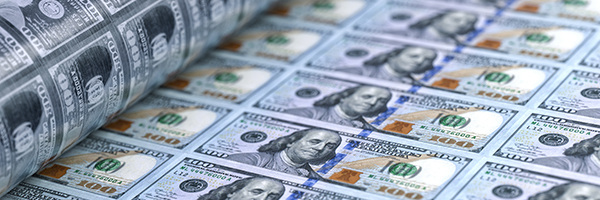
July 13, 2022 | Daily JAM, Morning Briefing |
It’s not the kind of historical comparison you want to hear. Inflation, as measured by the Consumer Price Index (CPI rose at a 9.1% annual rate in June. That was the highest annual rate since November 1981. (Just as the Volcker Fed was raising interest rates to 14% to finally break inflation.) Economists had been expecting inflation of 8.8%. Which would still have been an increase from May’s 8.6% headline rate.

July 9, 2022 | Daily JAM |
I expect a BIG week for inflation numbers. Investors and traders will get the June report on Consumer Price Index (CPI) inflation on Wednesday, July 13. The CPI isn’t the inflation index that the Federal Reserve tracks, but it is an indication of where inflation measures that the Fed does follow, such as the Personal Consumption Expenditures index are headed. The Fed next meets to set interest rates on Wednesday, July 27. The market is expecting the U.S. central bank to raise interest rates by 75 basis points at that meeting. On July 8, the CME’s FedWatch Tool put the odds of a 75 basis point increase at 93%. Economists surveyed by Bloomberg expect that headline CPI inflation–that is inflation that includes food and energy prices–climbed at a 9% rate in June. That would be above the 8.6% headline rate reported in May.

June 30, 2022 | Daily JAM, Morning Briefing |
The core Personal Consumption Expenditures index, the Federal Reserve’s preferred inflation measure, climbed at an annual rate of 4.7% in May. That was below economists’ expectations and a slight dip from the 4.9% annual rate in April.

June 23, 2022 | ABBV, Daily JAM, Dividend Income, GOLD, Jubak Picks, PXD, Special Reports |
The advice is sound, very sound. Move part (at least of your portfolio to cash and sit out the worst of this bear market on the sidelines. And since you have that cash in hand, you’ll be ready to snap up bargains when the market has put in a bottom (or near the bottom, or on the way up from the bottom…or something.) But right now that’s easier said than done.

June 22, 2022 | Daily JAM, Morning Briefing, Videos |
My one-hundred-and-forty-eighth YouTube video “Ouch! The Fed Gets Honest About Inflation” went up today. In front of the Senate Finance Committee today, Fed chair Jerome Powell said that the Fed has all the tools it needs to fight inflation–except, he admitted, that nothing it does to raise interest rates will lower the price of gasoline or food. Those prices don’t figure into the core inflation rate the Fed watches, but they are very real to consumers. More money spent on food and fuel means less money available for everything else.

June 13, 2022 | Daily JAM, Special Reports |
It is different this time: Part 1 and Part 2 of my Special Report: Your Best Investment Strategy for the Next 5 Years. And finally the full Part 3 with strategies and picks for the 5-year period including the “out” years. It’s likely to “be different this time” for the next five years or so. And you need an investment strategy for that period.

June 13, 2022 | Daily JAM, Morning Briefing |
The latest Consumer Expectations survey (that is for May) from the New York Federal Reserve shows U.S. households’ anticipate inflation will rise at a 6.6% annual rate over the next year. That’s up from April expectations for a 6.3% rate. The May anticipated rate matches March results in the survey for the highest inflation anticipation on record.

June 12, 2022 | Daily JAM, Friday Trick or Trend |
At its March 16 meeting the Federal Reserve’s Dot Plot showed Fed officials forecasting that the Fed’s short-term interest rate, now set at 0.75% to 1.00%, would end 2022 at 1.9%. Things have changed since then with the Federal Reserve due to meet on Wednesday, June 15. There’s currently a fairly large divergence on interest rate expectations for the end of 2022.The June meeting and the new Federal Reserve Dot Plot showing the consensus forecast by Fed officials will go a long way to narrowing that divergence. But I don’t expect all disagreement to vanish from the markets on Wednesday. And I do expect that resolving this disagreement will present a bumpy road to the financial markets.

June 11, 2022 | Daily JAM, Weekend JAM |
After Friday’s gut punch to stocks, the Wednesday, June 15, the meeting of the Federal Reserve’s interest-rate will be even more important for stock market direction. I argued back on June 2 in my video “Beware the Fed’s Dot Plot” that the June 15 meeting was likely to create big waves in the financial markets. Investors and traders would be ready to buy or sell big time depending on what the Fed said in its Dot Plot about its expectations for future interest rates, inflation, and economic growth. The Fed had already lowered its projections for economic growth, raised its projections for inflation, and increased its projections for interest rates at the end of 2022 and in 2023 at its March 16 meeting and the release of a Dot Plot on future expectations.Now, though, after inflation rose aggressively to an annual 8.6% rate in the May Consumer Price Index report on Friday, the stakes are even higher.

June 10, 2022 | Daily JAM, Morning Briefing |
Headline Consumer Price Index inflation in May rose to a new annual high rate of 8.6% in May, the Bureau of Labor Statistics reported today, June 10. Headline prices rose 1% from April. The big drivers were, as expected, food (with prices up at a 10.1% annual rate) and energy. The core CPI, which strips out food and energy prices, rose 0.6% in May from April and at a 6% annual rate.

June 9, 2022 | Daily JAM, Videos |
My one-hundred-and-forty-secondYouTube video “The Treasury Yield Tide Is Rising” went up today. Yields are up for 2-, 5-, and 10-year Treasuries. I’m also seeing higher expectations for more rate increases in the coming Fed meetings with the odds rising for a 75 basis point increase in July and/or September. I think these extreme bets on a 75 basis point increase have more to do with attitudes toward inflation than with actual belief in a 75-basis-point interest rate increase in those two months–that is that it will be tougher to bring it under control than the Federal Reserve now thinks. But these extreme positions are something to watch going forward. To one way of thinking they represent the chance for a rally in stocks if traders retreat from the 75-basis-point camp.

June 8, 2022 | Daily JAM, Morning Briefing |
Today, Wednesday, June 8, the Organization for Economic Cooperation and Development warned that Russia’s invasion of Ukraine is fueling rapid inflation and slowing global growth. “We are not projecting a recession ” at this time, said Mathias Cormann, the organization’s secretary general, but the organization lowered its estimate of global growth to 3% in 2022 from the 4.% percent it predicted at the end of last year. It estimated that average inflation among the organization’s member nations was likely to run close to 9% this year, double its previous forecast.













